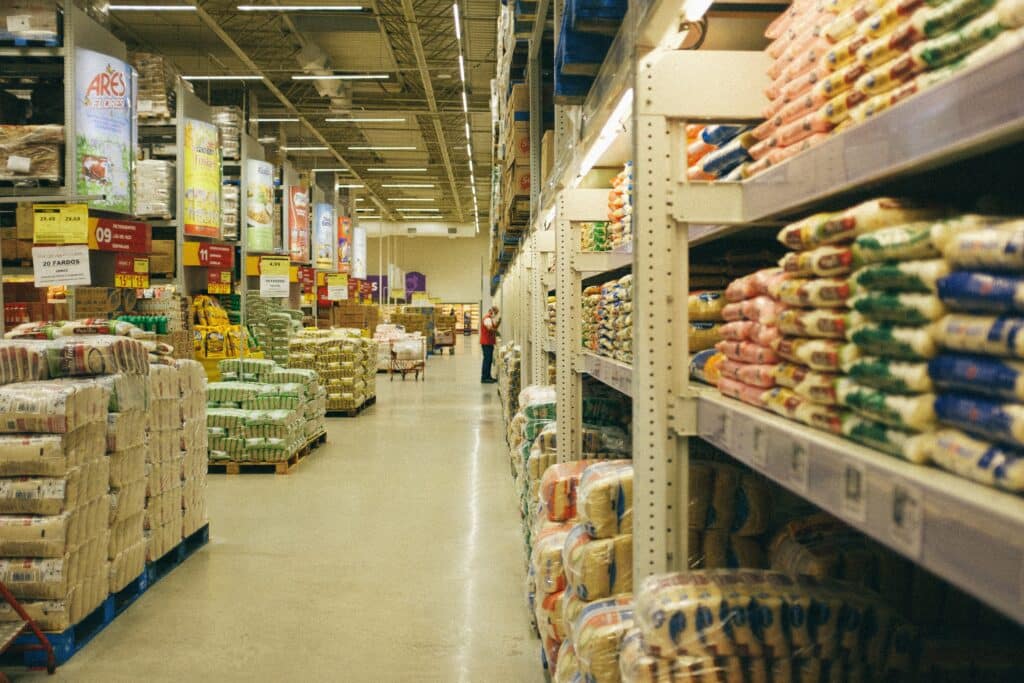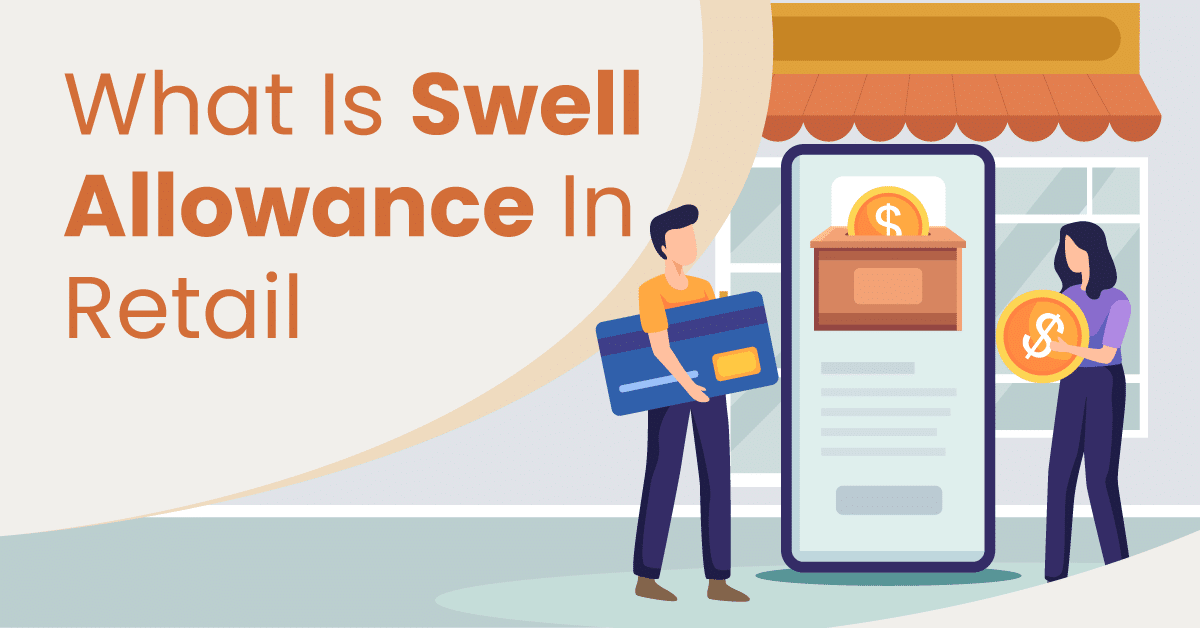
Every retailer knows the sting of unsold merchandise gathering dust on shelves or, worse, products that cannot be sold due to unforeseen issues. Be it damaged goods, mismatched sizes, or items nearing their expiration, these are challenges that retailers grapple with daily, affecting their bottom line and operational efficiency.
What is swell allowance in retail?
In retail, a swell allowance is a percentage of the purchase price of goods deducted from the invoice to compensate the retailer for unsellable items. These items may be damaged, spoiled, or past their expiration date.
The swell allowance is typically negotiated between the retailer and the manufacturer, and it can vary depending on the product and the retailer’s policies. For example, a retailer might negotiate a swell allowance of 5% for canned goods. This means that for every $100 worth of canned goods the retailer purchases, they will receive a $5 refund for any unsaleable items.
The swell allowance allows retailers to recoup some of the costs associated with unsaleable goods. It also helps to ensure manufacturers are not overcharging retailers for these items.
Reasons Why a Retailer Might Receive a Swell Allowance
1. The product is damaged or spoiled
Items that are damaged or spoiled often cannot be sold at full price, or in some cases, they can’t be sold at all. This could be due to shipping mishaps, poor storage conditions, or manufacturing defects. For instance, a soup can might be dented, or a garment might be torn.
Retailers typically work on thin margins, and selling damaged goods at a discount (or not being able to sell them at all) can hurt profitability. In this case, a swell allowance compensates for potential lost revenue and the operational costs involved in handling these damaged items, such as returning or disposing of them. It also fosters goodwill between the supplier and retailer by sharing the burden of the loss.
2. The product is past its expiration date
Perishable goods or items with a limited shelf life must be sold before expiration dates. Once a product is past its sell-by or expiration date, it can’t usually be sold. After all, keeping expired products can pose health risks to consumers and legal risks to retailers.
Receiving a swell allowance for expired products helps retailers cover losses from unsold goods. This allowance also incentivizes retailers to order and stock products without fearing potential losses from unsold inventory.
3. The product is not the correct size or color
Sometimes, due to order errors, miscommunications, or supply chain issues, retailers receive products that aren’t what they ordered in terms of size, color, or specifications. Selling a product that doesn’t match the desired specifications can be challenging. It might not fit the needs of the store’s clientele or the marketing promotions.
The swell allowance for such products acknowledges the supplier’s mistake and compensates the retailer for potential lost sales or the costs of returning the products.
4. The product is missing parts
Incomplete products, especially those requiring assembly or multiple components to function, are less valuable to consumers. A product is often rendered useless or incomplete if it lacks essential parts. For example, a toy with missing components or an electronic device without vital accessories can frustrate consumers and lead to returns or complaints.
A swell allowance in this scenario compensates the retailer for the diminished value of the product and the administrative costs associated with handling these incomplete items.
5. The product is not in the original packaging
Packaging plays a crucial role in the retail environment. If a product is not in its original packaging, it can be viewed as tampered with, second-hand, or unauthentic. Consumers might be wary of purchasing such products, leading to reduced sales. Additionally, handling and repackaging costs might be incurred by the retailer.
A swell allowance for these products compensates the retailer for the potential reduction in the product’s marketability and any associated costs.
6. Product recalls
This is a rare but costly event. Retailers can be reimbursed for the cost of recalled products by the manufacturer, but they may also be eligible for a swell allowance to cover the cost of lost sales.
The Challenges of Implementing a Swell Allowance
As discussed earlier, implementing a swell allowance has its advantages. However, there are also inherent challenges in its execution and management. Here are some of the challenges, along with a detailed explanation for each:
1. Administrative overhead
Implementing a swell allowance system means an added layer of administrative tasks. Retailers and suppliers must track, verify, and reconcile claims, which might require additional staff, software, and time.
2. Potential for abuse
There’s a risk that some retailers might take advantage of the system, making false or exaggerated claims to benefit from allowances. This could strain relationships with suppliers and increase costs for both parties.
3. Ambiguities in terms
If the conditions under which a swell allowance is granted aren’t clear, it can lead to disputes. For example, what qualifies as “damaged” or “spoiled” might be subjective and vary between parties. Clear documentation and agreement are required to prevent misunderstandings.
4. Cash flow implications
Suppliers might face challenges with cash flow if they have to pay out swell allowances frequently or in large amounts. Budgetary planning for these allowances is essential, but unexpected or high claims can disrupt financial planning.
5. Inventory management complications
Retailers may become less stringent about inventory management, knowing they have the safety net of a swell allowance. This could lead to inefficiencies in ordering, stocking, and selling products.
6. Strained supplier-retailer relationships
Continuous claims or disagreements over swell allowances can strain the relationships between retailers and suppliers. Trust is critical in business relationships, and if either party feels taken advantage of, it can damage long-term collaboration.
7. Pricing and margin pressures
Suppliers paying swell allowances might factor these costs into their product pricing, leading to higher retail prices. This could affect the retailer’s margins if they can’t pass those costs onto the consumer.
8. Determining the correct allowance amount
Deciding on the right compensation amount can be challenging. Too high, and the supplier may feel the pinch; too low, and it might not adequately compensate the retailer. It’s important to find a balance that reflects the actual loss or inconvenience the retailer faces without crippling the supplier.
9. Operational inefficiencies
Managing returns, replacements, and swell allowances can introduce operational inefficiencies. Retailers might have to allocate space for damaged goods, manage return shipments, and wait for replacements or credits.
10. Consumer perceptions
If customers become aware that a retailer frequently claims swell allowances, especially for reasons like product damage or expiration, they might question the quality of the retailer’s products. This can impact the retailer’s reputation and customer trust.
Clear communication, transparency, and clear systems and processes are necessary to navigate these challenges. Both retailers and suppliers must recognize the benefits and potential pitfalls of swell allowances and work collaboratively to ensure the system is fair, efficient, and beneficial to both parties.
How Can a Retail POS System Help Address The Challenges of Swell Allowance in Retail?
A great retail point of sale (POS) system is critical in modern retail environments, helping businesses manage sales transactions, inventory, customer data, and more. A robust POS system can solve several challenges regarding swell allowances. Here’s how:
1. Detailed Record Keeping
- Addressing challenge: Administrative overhead
- Solution: A POS system can automatically log and store transactional data, making it easier to track sales, returns, and damaged goods. This reduces the administrative burden of manually recording and verifying swell allowance claims.
2. Real-time Inventory Management
- Addressing challenge: Inventory management complications
- Solution: Advanced POS systems can automatically update inventory levels, allowing retailers to quickly identify and address products that are damaged, expired, or close to expiration.
3. Timestamped Transactions
- Addressing challenge: Potential for abuse
- Solution: Every transaction on a POS system is timestamped. This means there’s a verifiable record if there’s ever a dispute over when an item was sold, returned, or claimed for swell allowance.
4. Custom Reporting
- Addressing challenge: Determining the correct allowance amount
- Solution: POS systems can generate custom reports detailing which products are frequently returned or claimed under swell allowance. This data can be used to negotiate appropriate compensation amounts with suppliers.
5. Alerts and Notifications
- Addressing challenge: Product expiry
- Solution: The system can be set up to send alerts when products are nearing their expiration dates, allowing retailers to either discount them for a quick sale or return them to suppliers before they expire.
6. Integrate supplier communication
- Addressing challenge: Strained supplier-retailer relationships
- Solution: Some advanced POS systems can integrate with supplier systems, streamlining the process of communication and claims, thus reducing potential friction points.
7. Barcode scanning for verification
- Addressing Challenge: Ambiguities in terms
- Solution: Barcode scanning can immediately identify a product, its batch, manufacturing date, and more. This ensures that the product claimed for a swell allowance matches the product on record.
8. Customer feedback integration
- Addressing Challenge: Consumer perceptions
- Solution: Some POS systems allow immediate customer feedback during checkout. If a product is consistently rated poorly or identified as damaged, the retailer can act quickly, reducing the chances of damaging their reputation.
9. Automated return and allowance processes
- Addressing Challenge: Operational inefficiencies
- Solution: The system can automate the process of recording returns, categorizing them (e.g., damaged, wrong size), and calculating the associated swell allowances, reducing manual interventions and potential errors.
10. Cloud-based Accessibility
- Addressing Challenge: Administrative overhead and pricing/margin pressures
- Solution: Cloud-based POS systems allow easy data access from anywhere. This means both retailers and suppliers can review data in real-time, helping in transparent and informed negotiations about swell allowances.
While a POS system won’t eliminate all challenges associated with swell allowances, it can significantly mitigate many operational, administrative, and communication issues, making the process more efficient and transparent.
KORONA POS Can Help Retailers With Swell Allowance
With its cutting-edge inventory management features, KORONA POS offers a transformative solution for retailers grappling with the intricacies of swell allowances. This system effortlessly blends the rigors of real-time inventory tracking with predictive analytics. When products are nearing expiration dates or when damaged goods are scanned, KORONA POS logs these details and flags them for possible swell allowances.
Retailers no longer have to sift through mountains of data or rely on manual checks. The system’s intuitive dashboard provides a clear snapshot, showing which items are eligible for swell allowances and why, ensuring verifiable data back claims.
Moreover, its predictive capabilities can forecast product movement, allowing retailers to make informed ordering decisions, thus minimizing stock wastage and reducing the need for swell allowances in the first place. By leveraging KORONA POS, retailers can turn a potential loss into an opportunity, optimizing inventory and fortifying supplier relationships.
What Is Swell Allowance in Retail: Conclusion
Swell allowances are essential for retailers to manage their inventory and reduce shrinkage. By negotiating fair and equitable swell allowances with manufacturers, retailers can improve their bottom line and ensure they sell only the highest quality products to their customers.
Here are some additional things to keep in mind about swell allowances:
- Swell allowances are not always available. Some manufacturers may not offer them or only offer them to certain retailers.
- The amount of the swell allowance can vary depending on the product, the volume of sales, and the retailer’s relationship with the manufacturer.
- Swell allowances are typically paid out on a quarterly or annual basis.
- Retailers should carefully review the terms of any swell allowance agreement before signing it.












